
Holding the Xiaomi 14, even if only for a few minutes, I felt the phone was satisfyingly light. The size is neither too big, like the iPhone 15 Pro Max, nor too small, like my iPhone 13 mini. This time, Xiaomi’s 14 feels like a flagship smartphone because of its frosted matte back, which means that it won’t leave any fingerprints, and it’s also much smoother to the touch, allowing your finger to glide more easily. The build quality is very premium. The aluminum sides are reminiscent of the iPhone 15, while the back has this huge square-shaped camera that seems more raised. There’s no getting around the fact that it’s big and can be off-putting at first. I think I’ll likely get used to it in time.
That thin display bezel
 Xiaomi 14 has a small 6.3-inch screen with uniform bezels (Image credit: Anuj Bhatia/The Indian Express)
Xiaomi 14 has a small 6.3-inch screen with uniform bezels (Image credit: Anuj Bhatia/The Indian Express)
From the front, it looks like most premium Android phones with a bright, good-looking, and smooth 6.3-inch OLED screen with a 120Hz refresh rate. There’s excellent news for those who choose the Xiaomi 14 for its compact size. Frankly, the Xiaomi 14’s display does feel bigger. And, although I didn’t have the iPhone 15 Pro by my side, I wondered how Xiaomi managed to fit a large display with these bezels. The screen is entirely flat, which also means no more glare around the edges as well as added protection, resulting in fewer scratches and scrapes. By the way, the screen also makes use of Corning Gorilla Glass Victus, while the phone is 1P68 water and dust-resistant.
Processor power overkill
The Xiaomi 14 is powered by a flagship Snapdragon 8 Gen 3 processor, and the chipset is powering every high-end smartphone of 2024. Though I didn’t get to put the smartphone through its paces, it felt about as snappy as the OnePlus 12 in my experience. Paired with 12GB of memory, the Xiaomi 14 will be good enough for gaming and running AI-driven apps. There’s a 4,610mAh battery inside the phone, and I think it’s a decent battery capacity given the size and thickness of the device. It also supports up to 50W of wireless charging power and 10W reverse wireless charging. I am looking forward to testing the battery since I am a heavy user. It remains to be seen if the phone’s battery lasts me for an entire day of use easily or maybe more.
Xiaomi 14 ships with HyperOS, a brand-new system developed by Xiaomi that’s based on Android. Not only is the user interface clean (I am glad Xiaomi did it after years of feedback), but it is also designed to run on a range of devices across mobile, computing, automotive, and home.
The new Leica camera (and controls)
 HyperOS-powered Xiaomi 14 comes with a new camera UI (Image credit: Anuj Bhatia/The Indian Express)
HyperOS-powered Xiaomi 14 comes with a new camera UI (Image credit: Anuj Bhatia/The Indian Express)
Perhaps the biggest reason why I wanted to try this phone in the first place is that Xiaomi has brought the cost of owning a Leica camera down from $7000 to something I want to call affordable, all under 1000 Euros. For that money, you are getting the latest Android flagship smartphone with Leica-branded camera systems, and that’s a big deal, at least for me, who wanted a Leica camera.
Story continues below this ad
There are plenty of other impressive camera specs onboard, with three 50-megapixel sensors. The primary camera is a new 50-megapixel 1/1.31-inch “Light Fusion 900” image sensor with an f/1.6 aperture and OIS, complemented by a 50-megapixel JN1 ultrawide sensor with an f/2.2 aperture and 115° FoV, and a 50-megapixel JN1 telephoto sensor for 3.2x optical zoom and an f/2.0 aperture and OIS. The front camera is a 32MP sensor that can now do 4K 60fps video recording.
I’ll be undertaking a more comprehensive camera review soon, but I am more than happy to walk you through the camera app. By default, the shooting mode is “Photo,” which I believe will be used as the go-to shooting mode. You can access the three different lenses (marked 1x, 0.6x, 3.2x, 2x options). In this mode, you can switch to HDR shooting, a flash, and “AI” modes – the latter of which adjusts settings based on what the camera thinks it’s looking at. However, my favorite option is switching between “Leica Vibrant” and “Leica Authentic” colours, with the former being the default option and giving image colours a slight boost in saturation and contrast. Tap the filter icon in Photo and Portrait mode, and you will see Leica Vivid, Leica Natural, Leica BW Natural, and Leica BW High Contrast. But the integration with Leica goes beyond that.
For example, the Master Lens System icon in Portrait offers five bokeh shooting modes: Standard, Documentary 35mm, Swirly bokeh 50m, Portrait 75mm, and Soft focus 90mm.
I briefly tried the camera, and what impressed me the most (and I bet photographic purists agree) is how the Xiaomi 14 lets you switch off the color and capture the moment in black-and-white mode. The phone produces fairly impressive results, something I feel no other smartphone camera comes near to the Xiaomi 14.
Story continues below this ad
Here are some camera samples I took from the phone and decide for yourself how you rate Xiaomi 14’s camera.
 This should provide some context in how far the image was pushed. Image credit: Anuj Bhatia/The Indian Express)
This should provide some context in how far the image was pushed. Image credit: Anuj Bhatia/The Indian Express)
 There’s something magical about taking pictures in black and white. (Image credit: Anuj Bhatia/The Indian Express)
There’s something magical about taking pictures in black and white. (Image credit: Anuj Bhatia/The Indian Express)
 (This was another absolutely impressive image for the Xiaomi 14. credit: Anuj Bhatia/The Indian Express)
(This was another absolutely impressive image for the Xiaomi 14. credit: Anuj Bhatia/The Indian Express)
 Meet my friend from Germany. (Image credit: Anuj Bhatia/The Indian Express)
Meet my friend from Germany. (Image credit: Anuj Bhatia/The Indian Express)
 This was taken a few hours before sunset, giving us long shadows and a ton of contrast. (Image credit: Anuj Bhatia/The Indian Express)
This was taken a few hours before sunset, giving us long shadows and a ton of contrast. (Image credit: Anuj Bhatia/The Indian Express)
Early impressions
 A compact flagship with excellent camera setup (Image credit: Anuj Bhatia/The Indian Express)
A compact flagship with excellent camera setup (Image credit: Anuj Bhatia/The Indian Express)
My initial impression is that the Xiaomi 14 might be worth exploring for the camera and the compact size it offers. But again, I will be spending more time with Xiaomi’s latest smartphone before passing final judgment. Stay tuned!
The writer is in Barcelona attending the Mobile World Congress at the invitation of Xiaomi India.


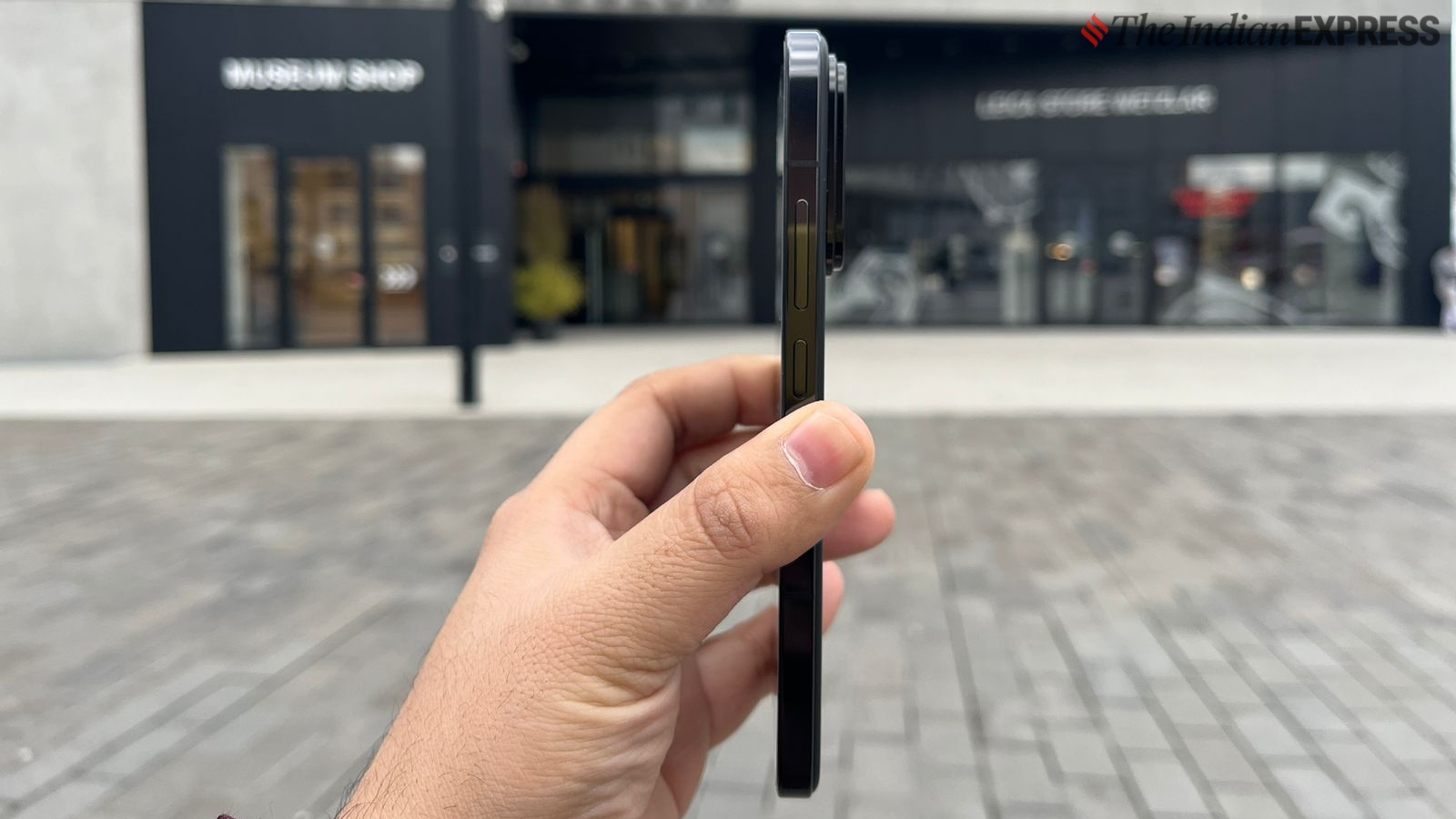 Xiaomi 14 comes with a metal frame and a frosted glass back (Image credit: Anuj Bhatia/The Indian Express)
Xiaomi 14 comes with a metal frame and a frosted glass back (Image credit: Anuj Bhatia/The Indian Express)
 Xiaomi 14 has a small 6.3-inch screen with uniform bezels (Image credit: Anuj Bhatia/The
Xiaomi 14 has a small 6.3-inch screen with uniform bezels (Image credit: Anuj Bhatia/The 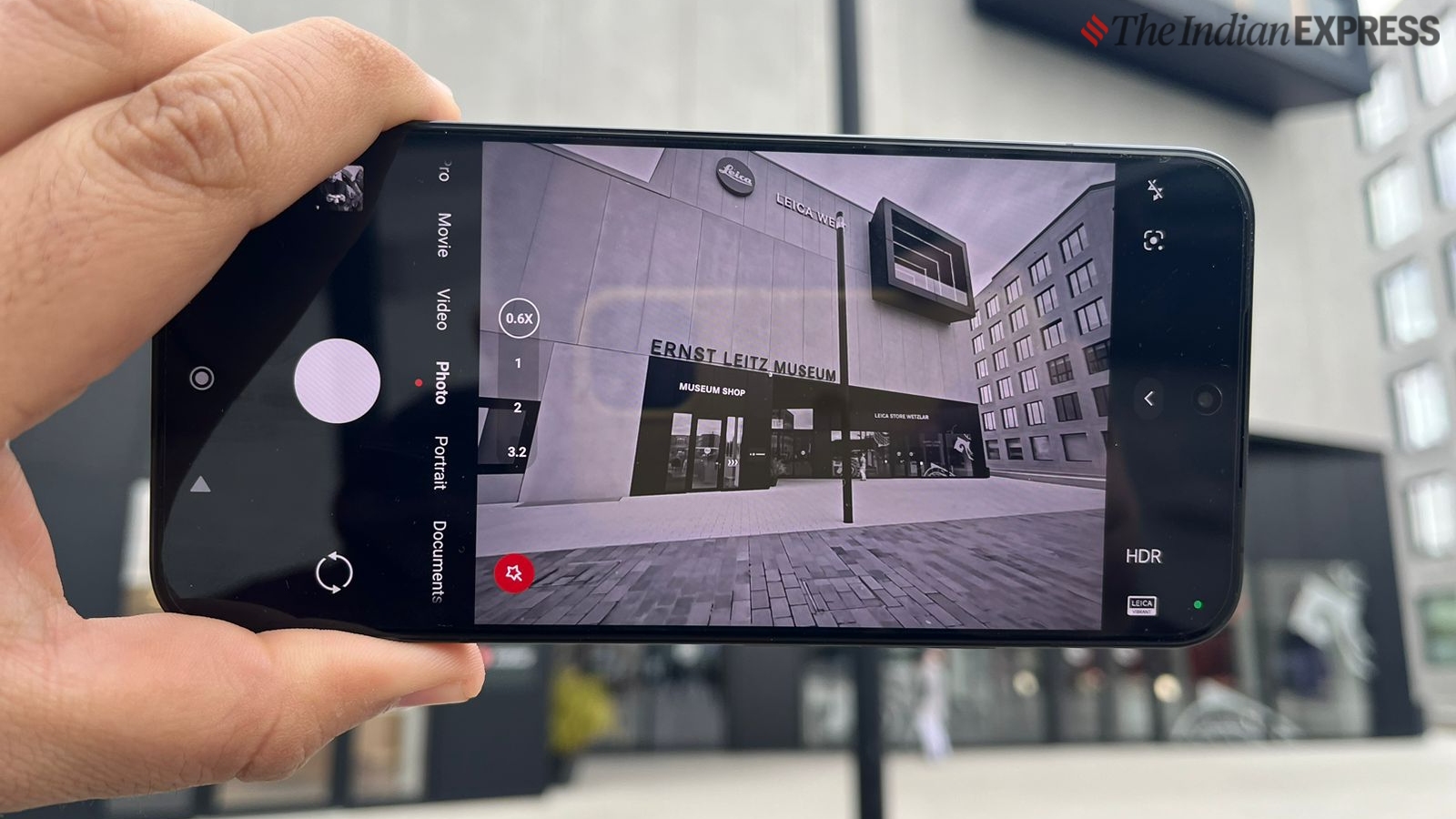 HyperOS-powered Xiaomi 14 comes with a new camera UI (Image credit: Anuj Bhatia/The Indian Express)
HyperOS-powered Xiaomi 14 comes with a new camera UI (Image credit: Anuj Bhatia/The Indian Express)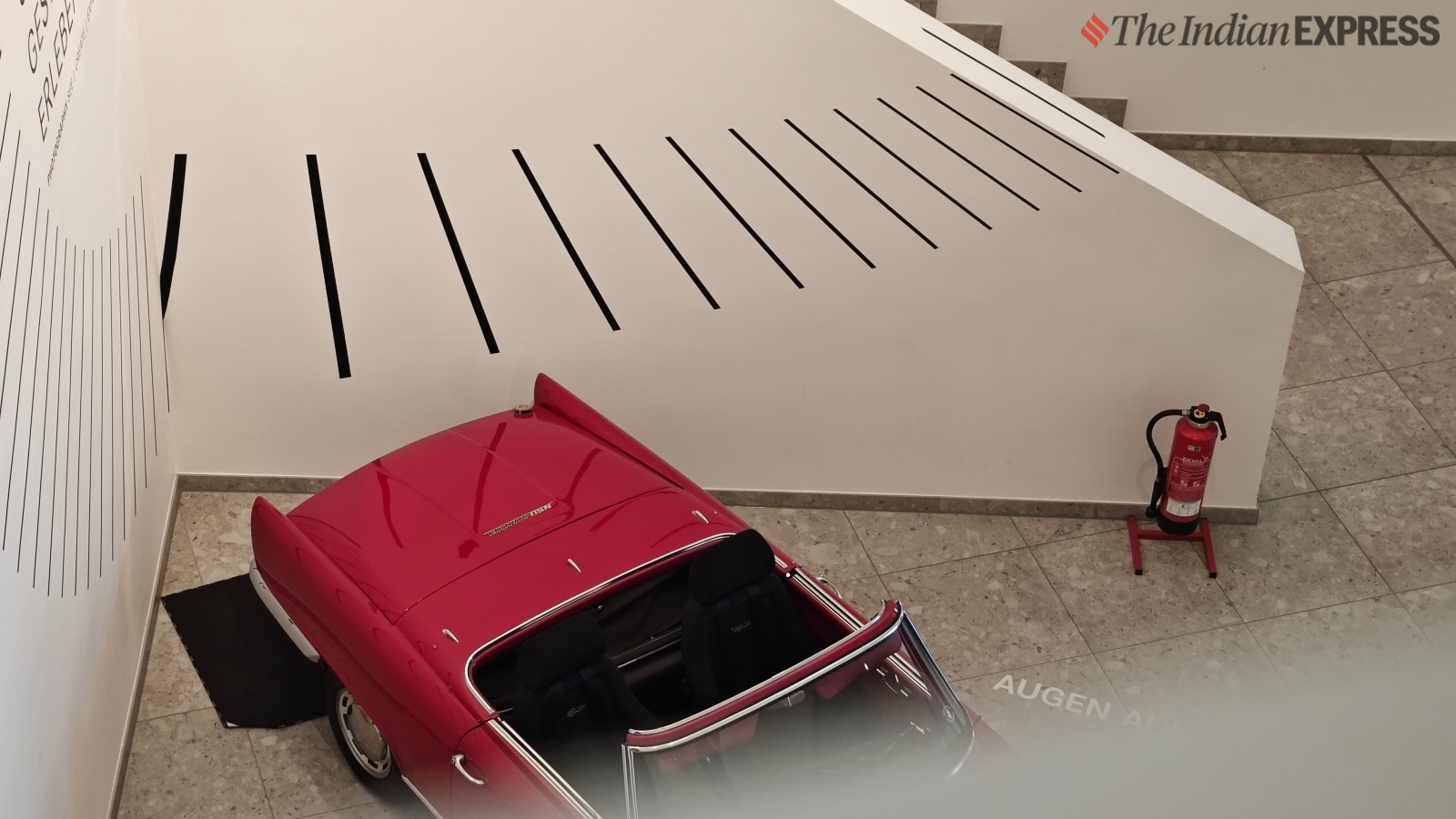 This should provide some context in how far the image was pushed. Image credit: Anuj Bhatia/The Indian Express)
This should provide some context in how far the image was pushed. Image credit: Anuj Bhatia/The Indian Express)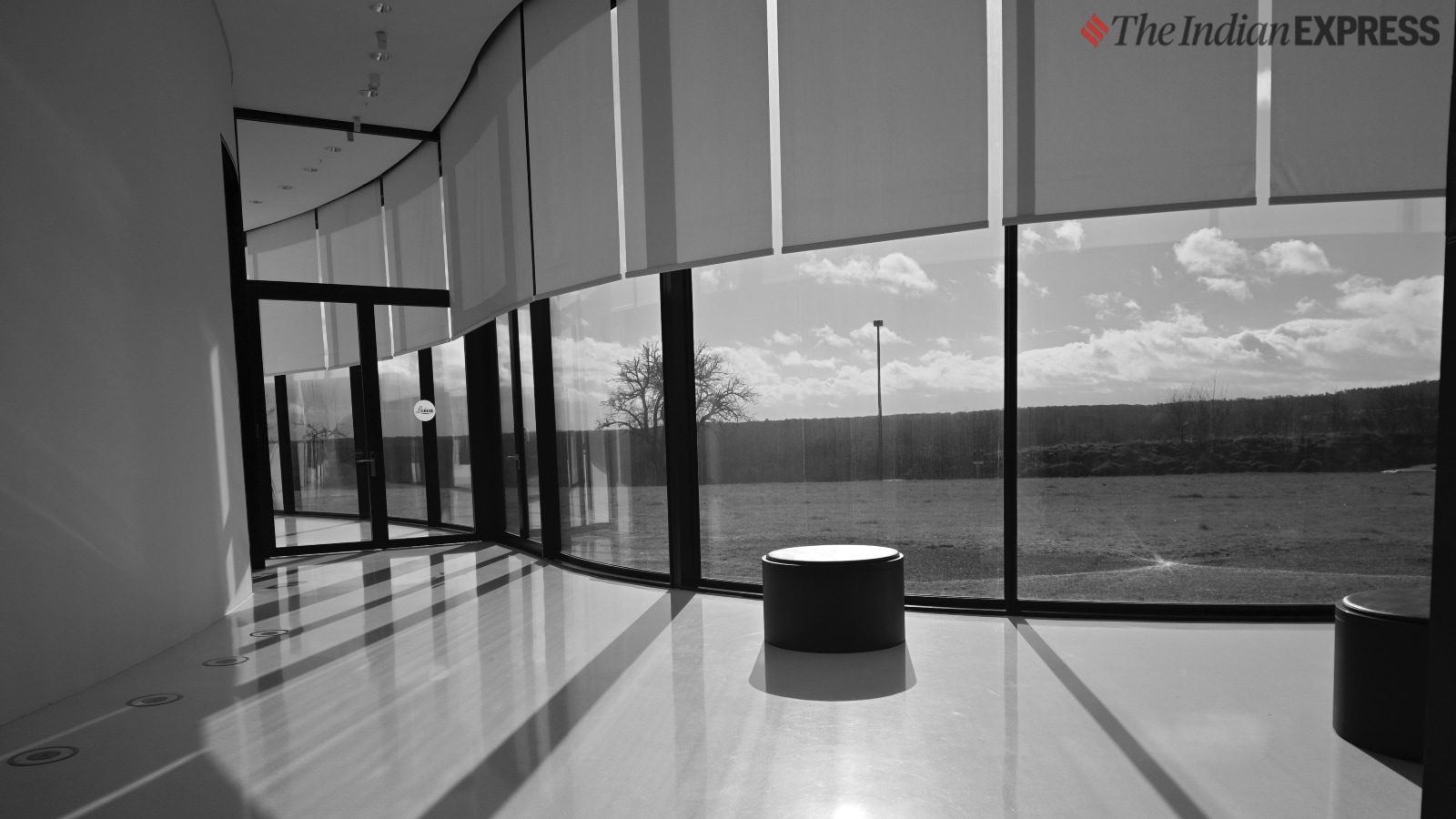 There’s something magical about taking pictures in black and white. (Image credit: Anuj Bhatia/The Indian Express)
There’s something magical about taking pictures in black and white. (Image credit: Anuj Bhatia/The Indian Express) (This was another absolutely impressive image for the Xiaomi 14. credit: Anuj Bhatia/The Indian Express)
(This was another absolutely impressive image for the Xiaomi 14. credit: Anuj Bhatia/The Indian Express) Meet my friend from Germany. (Image credit: Anuj Bhatia/The Indian Express)
Meet my friend from Germany. (Image credit: Anuj Bhatia/The Indian Express) This was taken a few hours before sunset, giving us long shadows and a ton of contrast. (Image credit: Anuj Bhatia/The Indian Express)
This was taken a few hours before sunset, giving us long shadows and a ton of contrast. (Image credit: Anuj Bhatia/The Indian Express)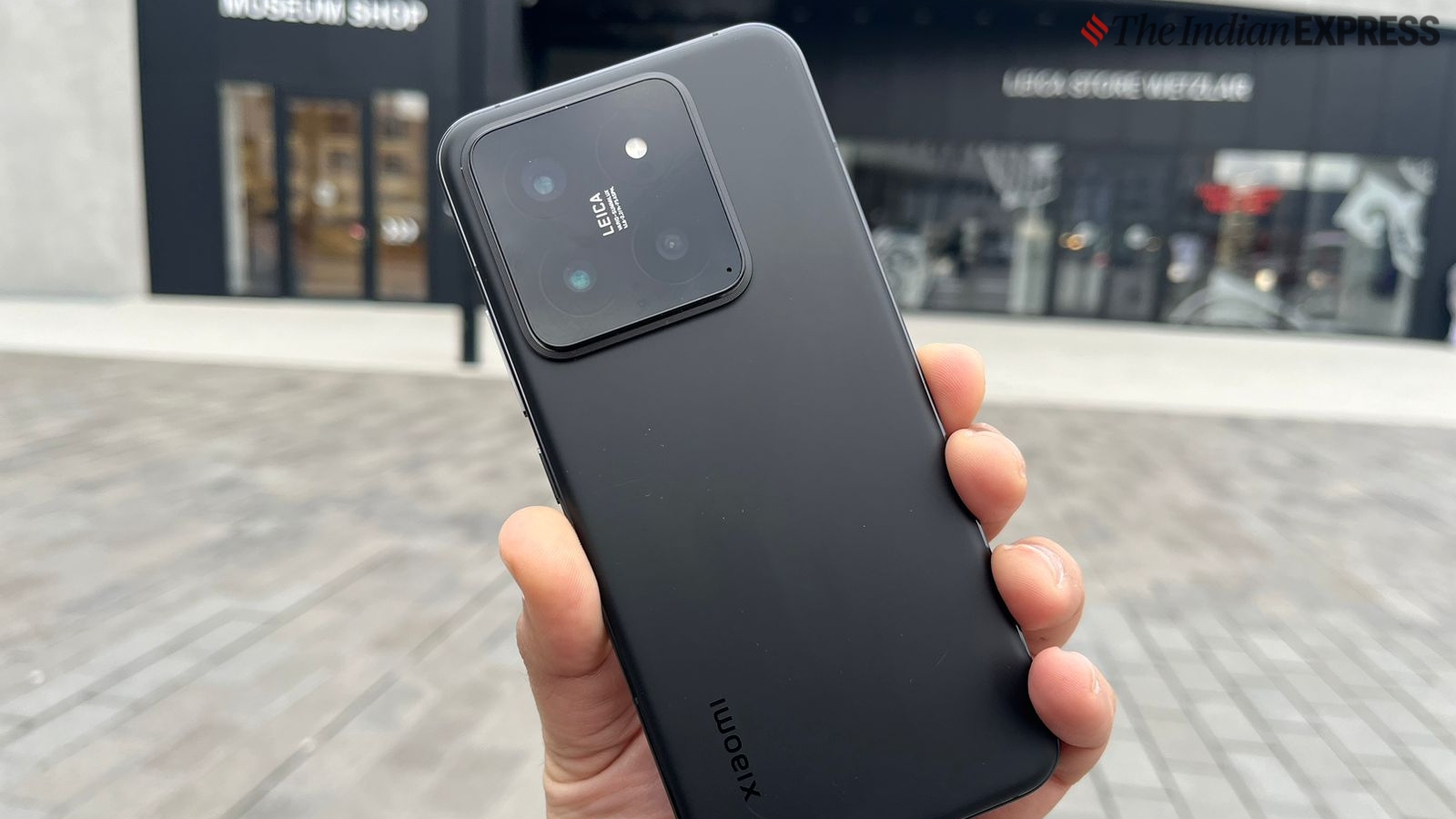 A compact flagship with excellent camera setup (Image credit: Anuj Bhatia/The Indian Express)
A compact flagship with excellent camera setup (Image credit: Anuj Bhatia/The Indian Express)





